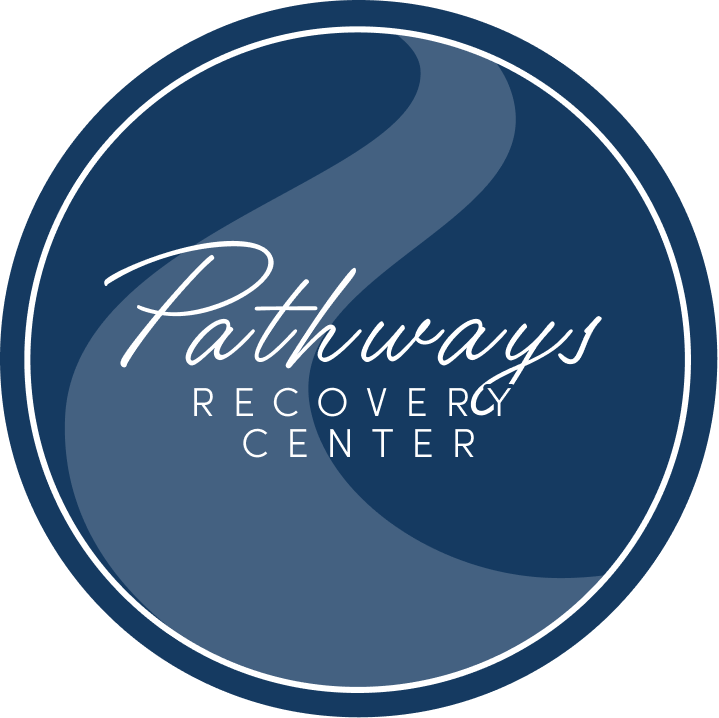Understanding Xanax Dependence
Xanax (alprazolam) is a benzodiazepine medication commonly prescribed to treat anxiety and panic disorders. While effective for short-term use, Xanax carries a high risk of dependence and addiction. According to the National Institute on Drug Abuse, benzodiazepines like Xanax work by enhancing the effect of the neurotransmitter GABA, which inhibits brain activity and creates a calming effect.
When used regularly, even as prescribed, the body can develop tolerance, requiring higher doses to achieve the same effect. Physical dependence can develop in as little as two weeks of regular use, making proper detoxification essential for those seeking to stop using Xanax.
Why Xanax Detox Requires Professional Supervision
Xanax withdrawal can be not only uncomfortable but also potentially dangerous or even life-threatening. Unlike some substances, benzodiazepine withdrawal can cause severe physical symptoms, including seizure,s and requires medical supervision.
At Pathways Recovery Center, we provide medically supervised detox services that ensure your safety throughout the withdrawal process. Our experienced medical team monitors vital signs and provides appropriate medications to manage withdrawal symptoms, significantly reducing the risks associated with Xanax detox.
The Xanax Withdrawal Timeline
Xanax withdrawal typically follows a predictable timeline, though individual experiences may vary based on factors such as duration of use, typical dosage, individual physiology, and the presence of co-occurring disorders.
Early Withdrawal (1-4 days) The initial phase begins within 6-12 hours after the last dose, particularly with short-acting benzodiazepines like Xanax. During this period, patients often experience rebound anxiety and restlessness, as the brain’s neurochemistry begins to adjust to the absence of the medication. Sleep disturbances typically emerge, accompanied by irritability, increased heart rate and blood pressure, and gastrointestinal symptoms such as nausea and vomiting.
Acute Withdrawal (5-14 days) The second week represents the peak intensity of withdrawal symptoms. This critical period carries the highest risk for severe complications, including seizures, which is why medical supervision is essential. Patients commonly report severe anxiety and panic attacks that may exceed their pre-medication baseline. Physical discomfort intensifies with muscle pain, stiffness, and tremors. Some individuals experience perceptual changes such as heightened sensitivity to light and sound or feelings of unreality.
Post-Acute Withdrawal (weeks to months) Following the acute phase, a more prolonged period of adjustment occurs as the brain continues to restore normal function. This phase can last for weeks or even months, characterized by lingering anxiety, unpredictable mood fluctuations, difficulties with memory and concentration, and persistent sleep disturbances. The intensity typically wanes gradually, but the duration of this phase often surprises patients who expected a shorter recovery timeline.
According to the Substance Abuse and Mental Health Services Administration, an estimated 9.2 million adults in the US have a co-occurring mental health and substance use disorder, making comprehensive treatment essential.
Medical Detox Protocol for Xanax
At Pathways Recovery Center, our medical detox program follows a comprehensive protocol:
1. Thorough Evaluation
Our medical team conducts a detailed assessment of your physical and mental health, substance use history, and any co-occurring disorders to create a personalized detox plan.
2. Stabilization and Tapering
Rather than abrupt cessation, which can be dangerous with benzodiazepines, we typically implement a gradual tapering schedule, sometimes substituting Xanax with a longer-acting benzodiazepine to ease withdrawal symptoms.
3. 24/7 Monitoring and Support
Throughout the detox process, our medical staff provides round-the-clock monitoring of vital signs, administers medications as needed, and offers emotional support.
4. Preparation for Ongoing Treatment
Detox is just the first step in recovery. We prepare you for transition to our residential inpatient program where underlying issues can be addressed through therapy and counseling.
Common Xanax Withdrawal Symptoms
Xanax withdrawal can manifest through various physical and psychological symptoms that range from uncomfortable to potentially life-threatening.
From a physical perspective, patients commonly experience headaches and pervasive muscle pain that can be debilitating. Tremors and shaking, particularly in the hands, often become noticeable even to others. The body may respond with autonomic instability, including sweating, fever, and chills as it attempts to reestablish homeostasis. Gastrointestinal distress frequently manifests as nausea, vomiting, and reduced appetite. Many individuals report a troubling hypersensitivity to sensory input—lights seem brighter, sounds louder, and touch more intense. In severe cases, especially with abrupt discontinuation, seizures may occur, which represents a genuine medical emergency requiring immediate intervention.
The psychological aspects of withdrawal can be equally challenging. Many experience a significant resurgence of anxiety and panic attacks, often more intense than what led them to take Xanax initially. Sleep becomes disrupted with both insomnia and disturbing nightmares when sleep does occur. Mood disturbances manifest as irritability, emotional volatility, and unexpected crying spells. A pervasive sense of depression and hopelessness may develop, particularly as physical symptoms persist. Cognitive function often suffers, with difficulties concentrating, memory problems, and mental fog. Throughout this process, intense cravings for Xanax can occur, creating a strong urge to relapse to alleviate the discomfort.
The Centers for Disease Control and Prevention reports that benzodiazepine overdose deaths have been rising, highlighting the importance of proper treatment for benzodiazepine use disorders.
Addressing Co-Occurring Disorders
Many individuals who develop dependence on Xanax were initially prescribed the medication for anxiety or other mental health conditions. Effective treatment must address these underlying issues through our dual diagnosis program.
Research from the National Institute of Mental Health indicates that individuals with anxiety disorders are more than twice as likely to develop substance use disorders, emphasizing the importance of integrated treatment approaches.
Inpatient vs. Outpatient Xanax Detox: Making the Right Choice
When considering treatment options for Xanax dependency, one of the most critical decisions is whether to pursue inpatient or outpatient detoxification. Both approaches have distinct advantages and limitations that should be carefully weighed based on individual circumstances.
Inpatient Detoxification
Inpatient detox provides 24/7 medical supervision in a controlled environment. This comprehensive approach offers several significant advantages for benzodiazepine withdrawal.
The constant medical monitoring creates an essential safety net for potentially dangerous withdrawal symptoms, including seizures that can occur with benzodiazepine detoxification. Medical professionals can immediately respond to emergencies and adjust medications as needed to manage symptoms. The structured environment removes access to substances and eliminates external triggers, substantially reducing the risk of relapse during this vulnerable period.
Beyond the medical benefits, inpatient programs provide immersive therapeutic support through individual counseling, group therapy, and complementary approaches that address the psychological aspects of dependency. For those with co-occurring mental health conditions like anxiety or depression (which often underlie Xanax use), dual diagnosis treatment can simultaneously address these issues. The residential setting also fosters community support from peers experiencing similar challenges, reducing feelings of isolation.
However, inpatient treatment does require a significant time commitment, typically 30-90 days, and necessitates taking leave from work, family responsibilities, and daily routines. The higher level of care also comes with greater costs, though many insurance plans provide coverage for these services when medically necessary.
Outpatient Detoxification
Outpatient detox programs offer a less intensive alternative that allows individuals to maintain certain aspects of their normal life while receiving treatment. Patients visit a treatment facility regularly—sometimes daily at first—for medical check-ins, medication management, and therapy, but return home afterward.
This approach provides greater flexibility and can be suitable for those with unavoidable work or family responsibilities. It also typically costs less than inpatient treatment, making it more accessible for those with financial constraints or limited insurance coverage. The ability to practice recovery skills in real-world settings can provide valuable practical experience in maintaining sobriety within one’s natural environment.
However, outpatient detox carries significant limitations for benzodiazepine withdrawal specifically. The lack of continuous medical supervision creates serious safety concerns given the potential for severe withdrawal symptoms, including life-threatening seizures. Access to substances remains possible, increasing relapse risk during a period of intense cravings and discomfort. Environmental triggers and stressors remain present, potentially exacerbating withdrawal symptoms and complicating recovery.
Making the Right Choice
According to research published by the National Institute on Drug Abuse, treatment outcomes are generally better when the level of care matches the individual’s needs. For Xanax detoxification specifically, several factors suggest that inpatient treatment may be necessary:
- Long-term use of high doses
- Previous withdrawal attempts or history of seizures
- Polysubstance use (especially alcohol)
- Co-occurring mental health conditions
- Limited social support at home
- Previous relapse in less structured settings
At Pathways Recovery Center, we conduct comprehensive assessments to determine the appropriate level of care for each individual. Our clinical team evaluates the duration and amount of Xanax use, overall health status, mental health conditions, social support systems, and previous treatment history to recommend the safest and most effective approach to detoxification.
For many individuals dependent on Xanax, the medical risks associated with benzodiazepine withdrawal make inpatient detox the safest option, at least during the acute phase (first 1-2 weeks). Following this period, some patients may transition to less intensive levels of care as they progress in their recovery journey.
After Detox: The Continued Recovery Journey
Completing detox marks a crucial first step in recovery, but it addresses only the physical dependency on Xanax. Sustainable recovery requires addressing the psychological aspects of addiction and developing new coping mechanisms for the anxiety or other conditions that initially led to Xanax use.
Following detoxification at Pathways Recovery Center, patients transition to our comprehensive treatment program that combines evidence-based therapies, holistic approaches, and a supportive community. Our residential inpatient treatment provides a structured environment where individuals can focus entirely on their recovery without external distractions or triggers.
Cognitive Behavioral Therapy (CBT) forms a cornerstone of our approach, helping patients identify and modify the thought patterns and behaviors that contribute to substance use. Dialectical Behavior Therapy (DBT) teaches essential skills for emotional regulation, distress tolerance, and mindfulness that provide alternatives to medication for managing anxiety.
Group counseling creates opportunities for shared experiences and mutual support, reducing the isolation often experienced during recovery. Simultaneously, individual therapy sessions allow for deeper exploration of personal issues and customized treatment planning.
For many patients recovering from Xanax dependency, learning non-pharmaceutical approaches to anxiety management becomes essential. Our program incorporates mindfulness meditation, stress reduction techniques, and relaxation training that provide sustainable tools for managing anxiety without medication. Physical wellness activities, including nutrition counseling and exercise, support overall health and natural anxiety reduction.
Family involvement plays a crucial role in long-term recovery. Through family therapy and education, we help repair relationships damaged by addiction and build a supportive home environment that sustains recovery after treatment concludes.
Throughout treatment, our team works collaboratively with each patient to develop a comprehensive relapse prevention plan that identifies triggers, warning signs, and specific strategies to maintain sobriety. As treatment progresses, we help patients prepare for reintegration into daily life with aftercare planning that may include outpatient therapy, support groups, and ongoing medication management if needed.
The journey from Xanax dependency to sustainable recovery requires commitment and comprehensive support. At Pathways Recovery Center, we provide the full spectrum of care needed to address not just the physical aspects of addiction but the underlying issues that contribute to substance use, creating a foundation for lasting wellness.
Frequently Asked Questions About Xanax Detox
How long does Xanax stay in your system?
Xanax (alprazolam) has a relatively short half-life compared to some other benzodiazepines, typically 11-16 hours in healthy adults. Generally, it takes about 4-5 half-lives for a drug to be eliminated from the body, meaning Xanax may be cleared from your system within 2-4 days. However, detection times vary based on:
- The test being used (urine, blood, hair, etc.)
- Your metabolism and age
- Liver function
- Duration and amount of use
- Whether you take extended-release formulations
It’s important to note that while the drug may no longer be detectable in standard tests after a few days, the body and brain require much longer to recover from its effects, especially after prolonged use.
Is it dangerous to quit Xanax cold turkey?
Yes, abruptly stopping Xanax, especially after regular or high-dose use, can be extremely dangerous and potentially life-threatening. Benzodiazepine withdrawal can cause severe symptoms, including seizures, psychosis, and in rare cases, death.
The Centers for Disease Control and Prevention cautions that benzodiazepine withdrawal should always be medically supervised. A proper tapering schedule monitored by healthcare professionals can manage these risks and significantly reduce discomfort during the withdrawal process.
How long does Xanax withdrawal last?
The withdrawal timeline varies considerably between individuals, but generally follows these phases:
- Early withdrawal (1-4 days): Symptoms begin within 6-12 hours after the last dose and include anxiety, insomnia, and irritability.
- Acute withdrawal (5-14 days): Peak intensity of symptoms, including potential seizures and severe anxiety.
- Post-acute withdrawal (weeks to months): Lingering symptoms that gradually diminish over time.
Some individuals experience protracted withdrawal syndrome, where milder symptoms persist for months or even years after discontinuation. This is more common with long-term, high-dose use.
Will my insurance cover Xanax detox treatment?
Most private insurance plans provide some level of coverage for substance use disorder treatment, including detoxification. The Mental Health Parity and Addiction Equity Act requires that insurance plans offering mental health coverage provide benefits comparable to those for medical and surgical care.
At Pathways Recovery Center, we work with most major insurance providers and can verify your benefits before admission. Our admissions team will help you understand what portion of treatment your insurance will cover and what, if any, out-of-pocket expenses you might incur.
What medications are used during Xanax detox?
Medical detox for Xanax typically involves a controlled tapering approach using one of these methods:
- Gradual Xanax tapering: Slowly reducing the Xanax dosage over time to minimize withdrawal symptoms.
- Substitution tapering: Replacing Xanax with a longer-acting benzodiazepine like diazepam (Valium), which can provide more stable blood levels and smoother withdrawal.
- Adjunctive medications: Additional medications may be prescribed to manage specific symptoms, such as:
- Anticonvulsants to prevent seizures
- Sleep aids for insomnia
- Blood pressure medications for autonomic symptoms
The specific approach depends on your individual circumstances, medical history, and the severity of dependence.
Can I work or attend school during Xanax detox?
During the acute phase of Xanax withdrawal, most individuals find it difficult to maintain normal activities due to physical symptoms and cognitive effects. Inpatient detox typically requires a temporary leave from work or school.
For those in outpatient detox programs, functioning may be impaired for several weeks. Many people benefit from taking short-term medical leave or reducing responsibilities during this period. Our clinical team can provide documentation to support medical leave requests when appropriate.
What happens after detox is complete?
Detox is only the first step in recovery from Xanax dependence. To maintain long-term sobriety, continued treatment is essential to address the underlying issues that contributed to substance use and to develop healthy coping mechanisms.
After completing detox at Pathways Recovery Center, we recommend transitioning to our residential program where you’ll participate in:
- Individual therapy
- Group counseling
- Cognitive Behavioral Therapy
- Anxiety management techniques
- Relapse prevention education
Developing a comprehensive aftercare plan is crucial for sustained recovery. This may include outpatient therapy, support groups, and continued psychiatric care if needed.
How do I help a loved one who is dependent on Xanax?
Supporting a loved one with Xanax dependence requires understanding, patience, and appropriate boundaries:
- Learn about benzodiazepine dependence: Educate yourself about the nature of benzodiazepine dependence and withdrawal to better understand what your loved one is experiencing.
- Encourage professional help: Express your concerns compassionately and emphasize the dangers of attempting to quit without medical supervision.
- Offer practical support: Help research treatment options, assist with insurance verification, or provide transportation to appointments.
- Practice self-care: Supporting someone through addiction recovery can be emotionally taxing. Seek support for yourself through groups like Al-Anon or individual counseling.
- Set healthy boundaries: While offering support, be clear about what behaviors you can and cannot accept, and avoid enabling continued substance use.
If your loved one is ready to seek help, contact Pathways Recovery Center together to learn about our family support services and treatment options.
Taking the First Step
If you or a loved one is struggling with Xanax dependence, don’t wait to seek help. Attempting to detox alone can be dangerous and significantly increases the risk of relapse.
Contact Pathways Recovery Center today at 1-888-681-6726 for a confidential assessment. Our admissions team is available 24/7 to answer your questions and guide you through the process of beginning your recovery journey.
Located in Azusa, California, we serve clients throughout Los Angeles County and beyond. Get in touch today to learn how we can help you achieve lasting recovery from Xanax dependence.
Note: This information is intended for educational purposes and should not replace professional medical advice. Always consult with healthcare professionals before making decisions about medication or treatment.




